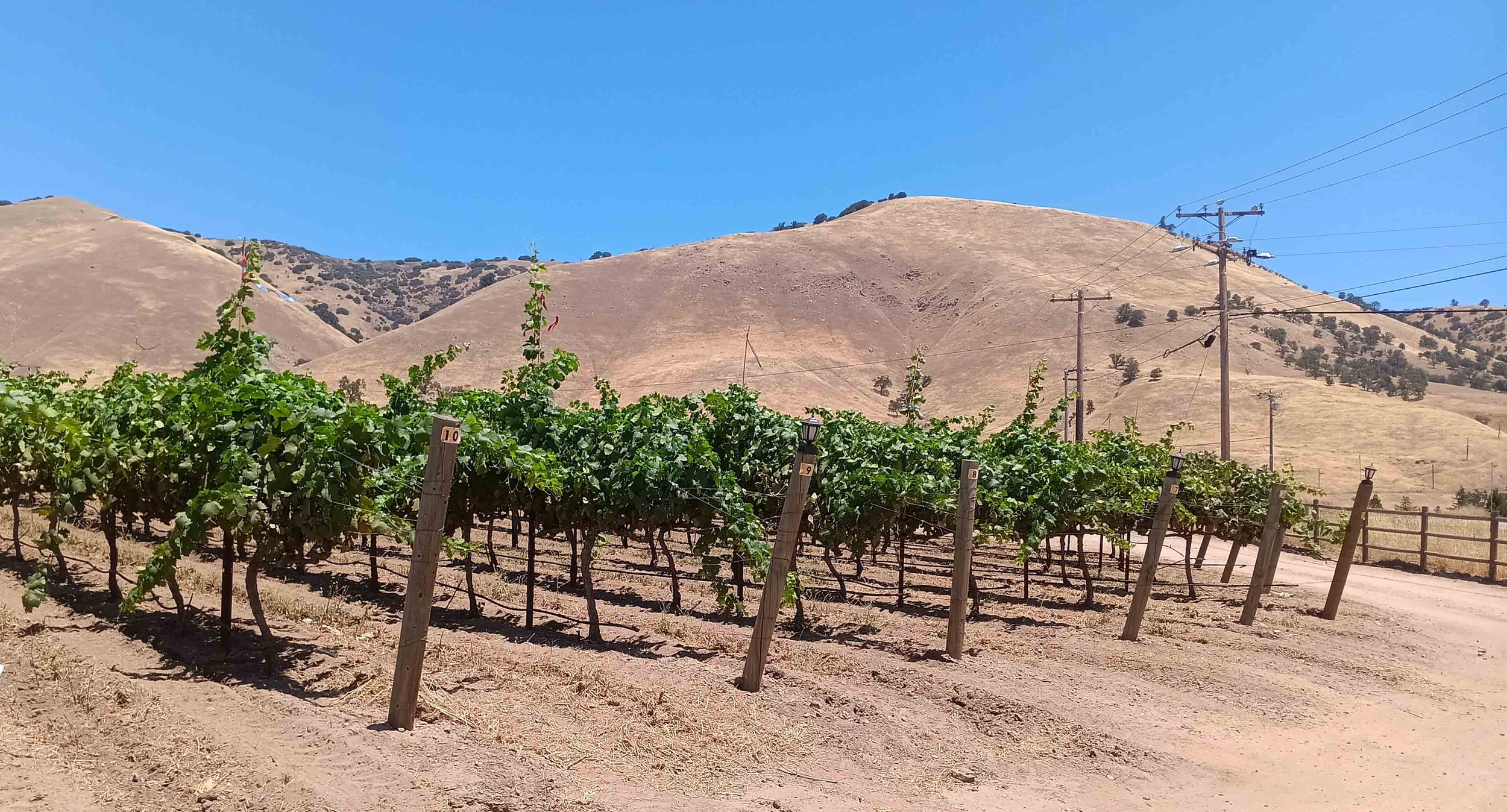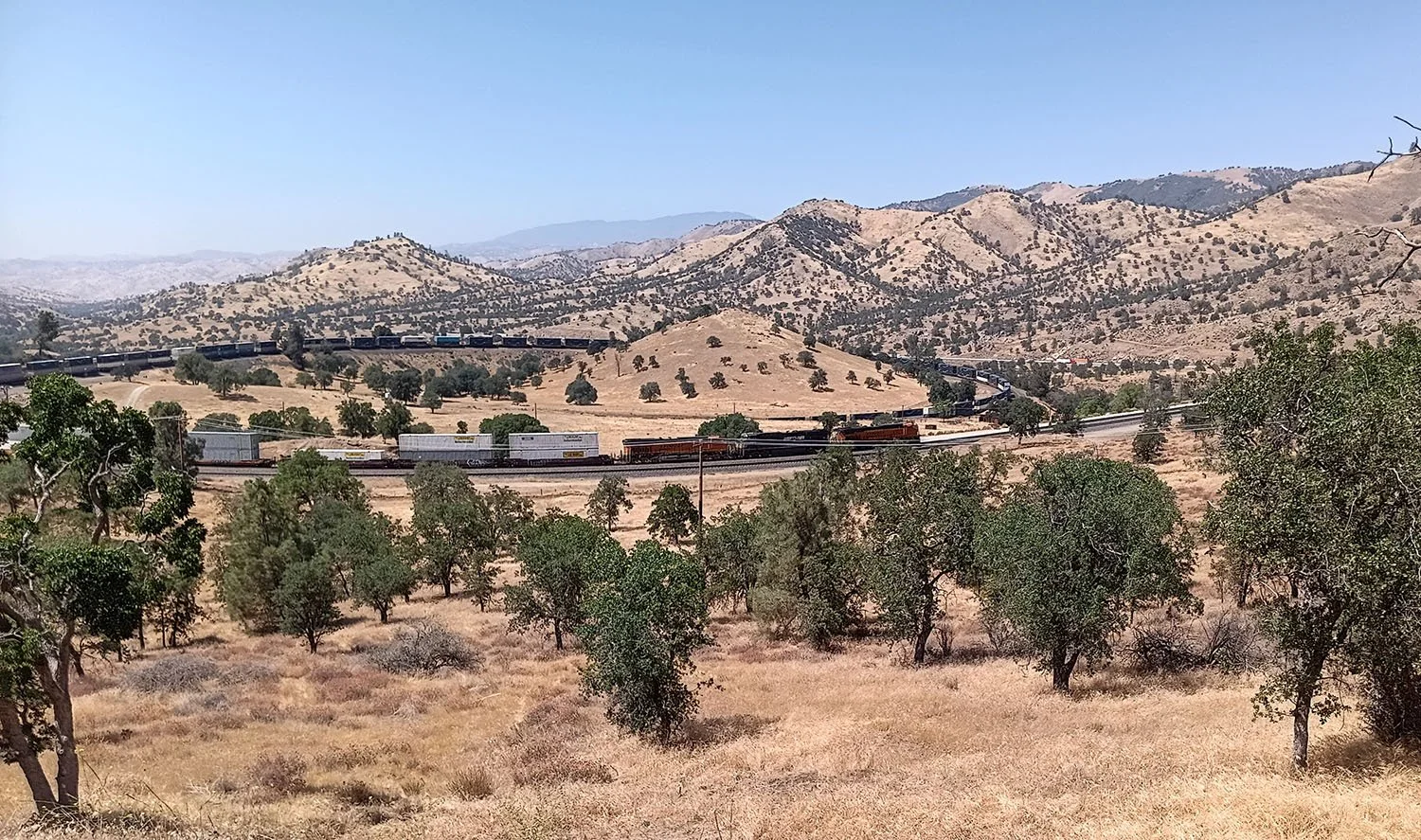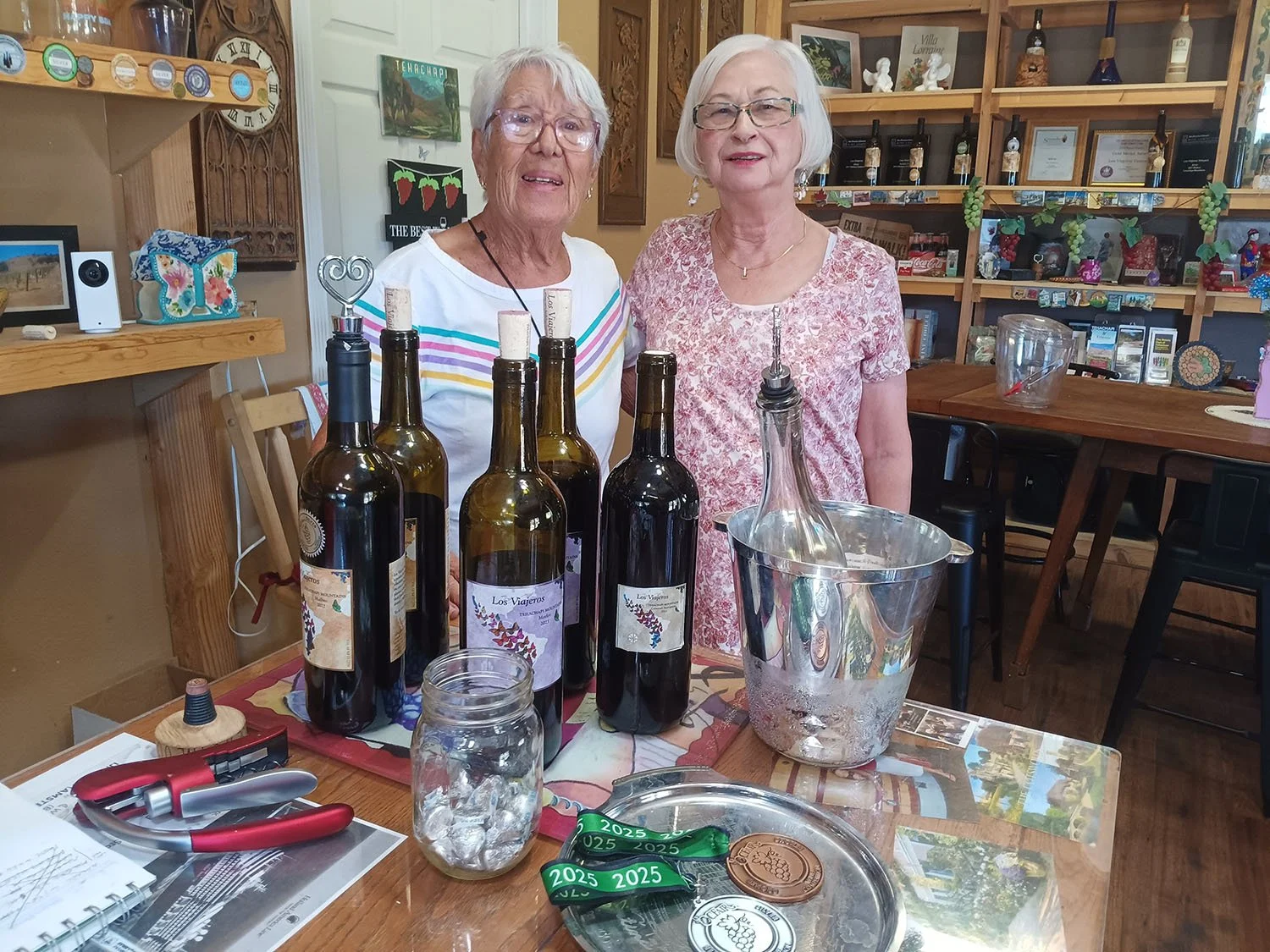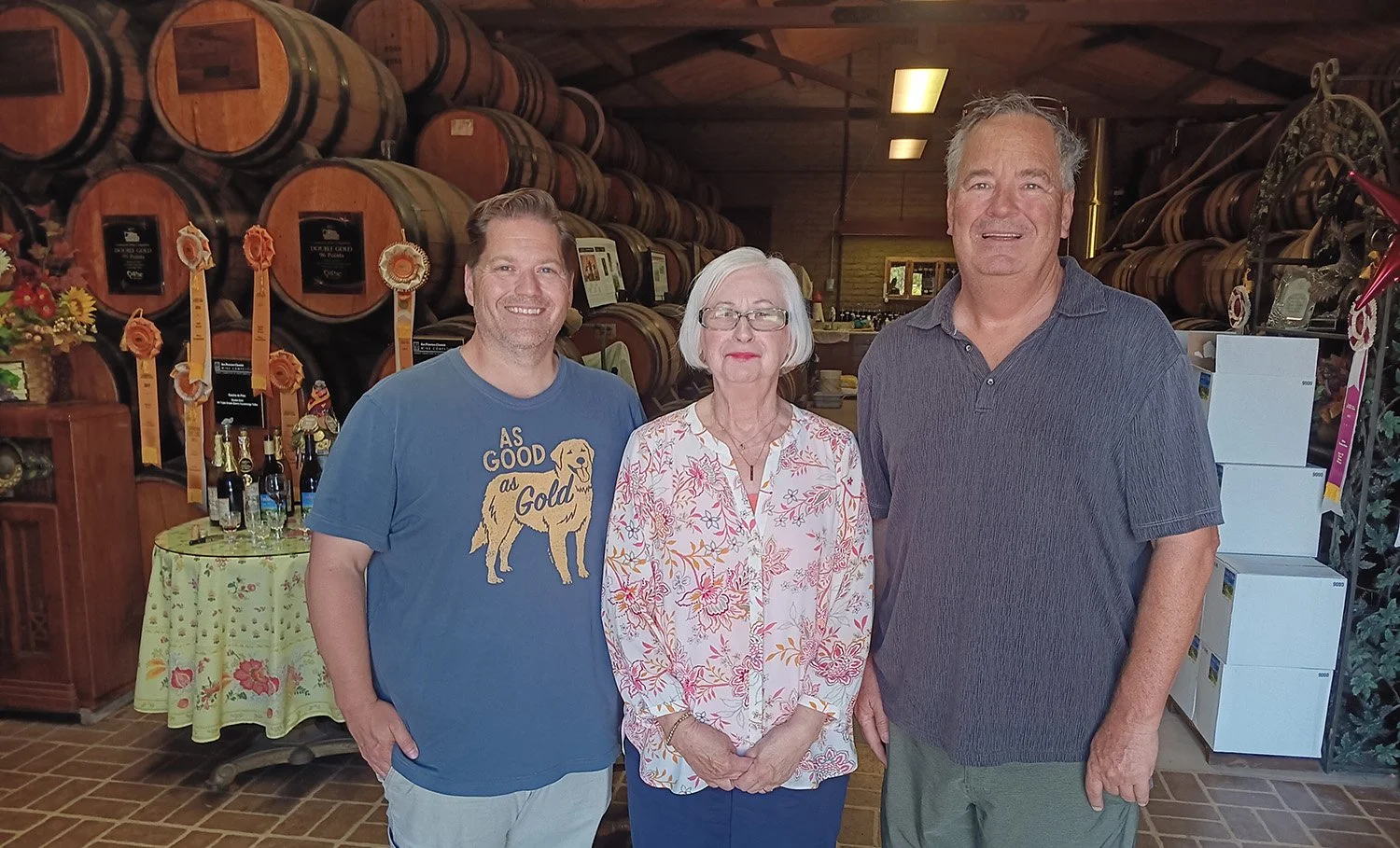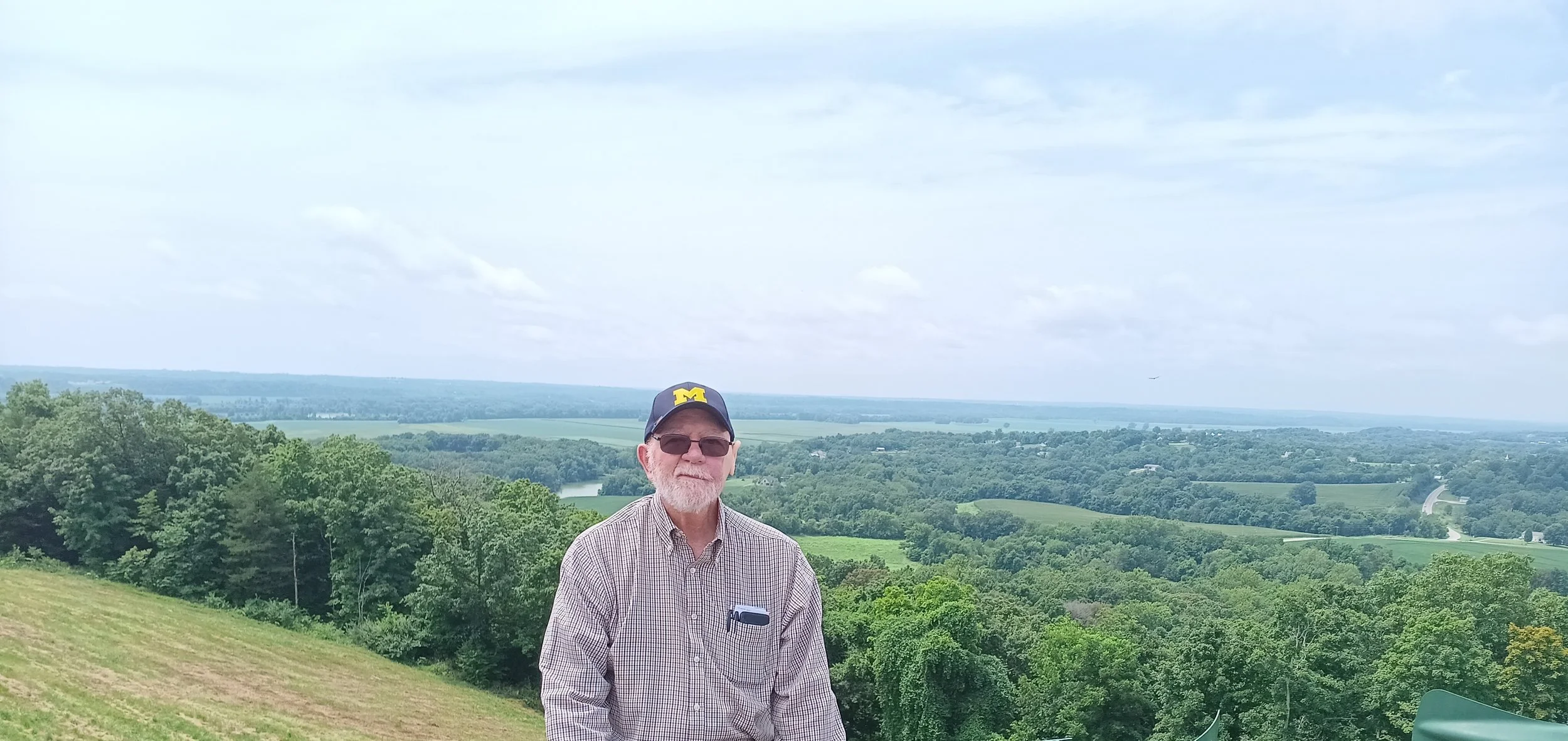On the Road Again

Obviously, I like to drive and Alice likes sitting in a car because we just drove over 5,200 miles out to California and back for a family reunion. Fortunately, we had plenty of time to catch up with family as well as a leisurely drive back to Michigan encountering many vinous adventures.
Our family reunion was in Tehachapi (pronounced ta-hatch-a-pee by the locals) which is encompassed by the Tehachapi Mountain AVA. This is a relatively new wine region by California standards and as such they are still in the process of figuring out what grows best where. You can still expect West Coast quality but the bank of winemaking and grape growing knowledge and skill is still a long way behind regions like Napa, Sonoma, Paso Robles, or Monterey. I think with what seems to be a steep upward curve in quality, it won’t be long before they might rival regions like Lodi, Temecula or the Sierra Foothills. Tehachapi is up around 3,500 feet elevation at the valley floor up to about 4,000 feet where most of the grapes are grown though many of the residences and a few of the vineyards are above the 4,000 foot range.
This is an old railroad town known for the world’s only “train loop”. As you know, roads often have switchbacks in order to navigate a mountain. But, to do this with trains often pulling hundreds of cars, it takes a huge amount of space to have a train switchback. In order to make it over the mountain pass just before reaching Tehachapi, the early railroad engineers had to come up with a much tighter solution because there just wasn’t enough space going up the mountain for the final switchback. The amazing solution was a loop in which the front of the train goes through a tunnel then loops over the back of the train as it goes over the tunnel. We stood on an observation deck halfway up the mountain to get a great view. There are over 50 trains a day that go through the loop.
Our family reunion was held at Dorner Family Vineyard where we enjoyed a catered meal with their Estate Tehachapi Mountain Zinfandel and a California Chardonnay.
Afterward, we visited Triassic Vineyards whose soil dates back to the Triassic era and who also specializes in Estate grown Zinfandel though they do also make an Estate Tempranillo and an Estate Viognier. The setting of this winery reminded me of the hills in Monterey County just south of Hollister California. When I think of California, I always think of the roasted brown hills with scattered oaks and lush vineyards at the base. Our tasting host was the daughter of widow Sally Arnold who continues to run the estate after her husband, Jim’s passing. From there we stopped in at Tehachapi Wine and Cattle Company which was and still is a cattle ranch but as you guessed have branched out into viticulture. They refer to their Zinfandel as Primitivo (the Italian synonym) and we were offered a remarkably good Estate Primitivo and a Reserve Primitivo. Our last stop in Tehachapi at Rancho do los Viajeros, we got to meet the other widow whom I’ll refer to as the Grand Dame of Tehachapi Mountain AVA. Ilda Vaja now in her late 80’s and her husband came to the US from the Mendoza region of Argentina originally to New York but due to employment opportunities moved to California and lived in Stallion Springs where my cousins also live. On her way to and from Tehachapi, she always admired the lovely hillside home at about 4,200 feet along Highway 202. When the house went on the market in 2007 she and her husband bought it and planted Malbec in homage to their homeland. Her husband has passed away but she still manages the ranch, winery and even serves in the tasting room herself. It was quite an unexpected pleasure to meet her and get the scoop on her wines and winery first hand.
Actually, in all of the wineries we visited in Tehachapi an owner or family member greeted us. It brought back many memories of the many wineries we visited years ago when it was the norm not the exception to be greeted by the name on the label. Yes, there was a day when Robert Mondavi worked the tasting room.
This brings us to our next stop a couple of hours south of Tehachapi in a suburb of Los Angeles where not so long ago almost all of the wines in California were grown. Of the 150,000 acres of vineyard churning out millions of cases of wine annually in Rancho Cucamonga, only a few vineyards remain. As the LA sprawl marched on past Pasadena it swallowed up Riverside, Ontario, Rancho Cucamonga and San Bernardino. The cheapest land for development was, of course, agricultural land, the majority of it in these parts, vineyards. Today, the Lopez Ranch which is a vineyard without a winery and appears to be something in the order of three hundred acres, the Galleano Winery which I’d guess to be about 160 acres, Rancho de Phio with six acres of Mission grapes and Biane Winery who still farms an acre or two are all that is left. Yes, if you drank California wine in the 1960’s and 1970’s you were undoubtedly drinking Cucamonga Valley AVA products though ironically, the AVA didn’t come into being until nearly all the vineyards were gone in 1997.
Our first stop was Biane Winery which is mostly a really interesting museum of the enormous wine production that took place 50+ years ago. It is still a working winery though by California standards would be considered a very small boutique winery. Crush takes place in the parking lot and fermentation takes place right in the tasting room. Our host Raquel, gave us a history of the region as well as this winery. I was surprised that the reason Biane is not pronounced Bee’-On-Aye as my Italian ancestors would pronounce it, but pronounced Bee-ehn’ because the Biane’s are French!
As we were talking and tasting, who would walk in but Tony Tibbetts the grandson of Philo Biane CEO/President who founded Rancho de Philo when he retired in 1974 to specialize in Cream Sherry produced by Mission grapes exclusively. It was the Mission grapes which the Padres in the 1500’s and 1600’s brought to the missions of California from Spain to make sacramental wines. He invited us up to Rancho de Philo where we also met Pat Wheelock the sales manager and admired their ancient Mission vineyard and got to enjoy some stunningly delicious Cream Sherries dating back to 1992. They employ a true solera so that all of their sherries contain every vintage ever produced here. They are fabulous!!
The next day we got to Galleano Winery which is as old-school as it gets. All of the wines are non-vintage and blends of various old head pruned dry farmed vines surrounding the winery. The winery itself is like a small village with the winery, barns, homes and a small park. We also visited the now defunct (in ruins actually) Guasti Winery. Some of the village still remains including a beautiful little church (San Secondo d’Asti) still in pristine condition as were a few of the homes still inhabited. Back a hundred or more years it was typical for a large winery to encompass the sole purpose and support for an entire village of immigrants coming to the new world to enrich it with traditions from the homeland.
Though all of the wines in the past were marketed as simply California, the handful of wineries making wine from local grapes proudly sell them with the Cucamonga Valley AVA today. Also, a handful of producers from other parts of California market them under their label with the Cucamonga Valley AVA stated clearly on the label.
We will be holding a tasting in the near future of the many wines from Tehachapi and Cucamonga that we brought back with us. So, stay tuned for the next edition.
Enjoy in Good Health,
A Brian Cain, the Michigan Vintner
